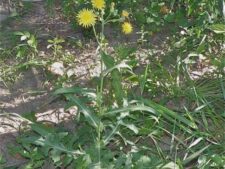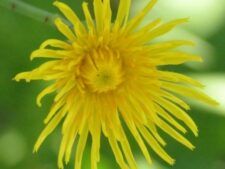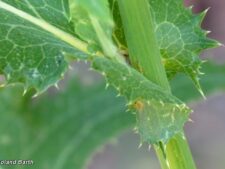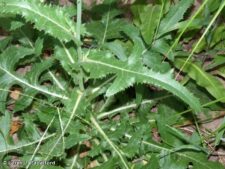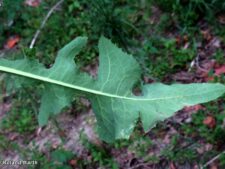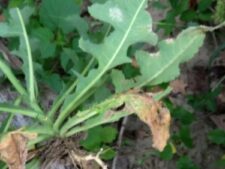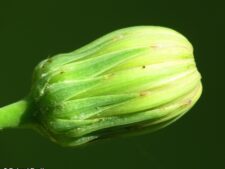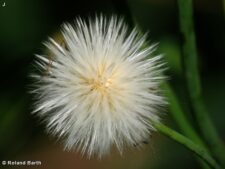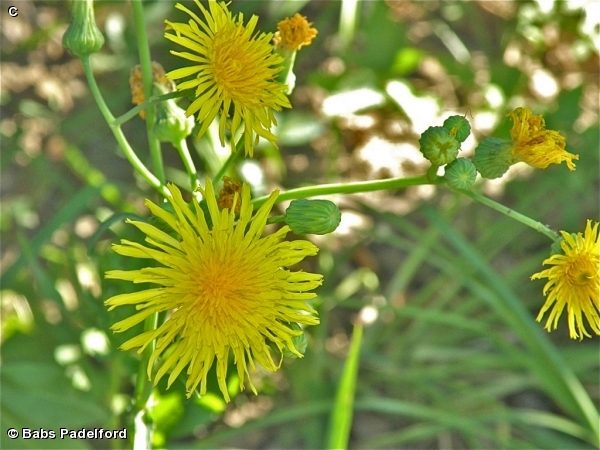
COMMON SOW-THISTLE
Sonchus oleraceus
SUNFLOWER FAMILY (Asteraceae)
 Identification
Identification
- Flowering time - June, July, August, September, October
- Rare on floodplain at FF
- Dandelion-like yellow flower
- Divided leaves with small prickles along the margins
- See comments for comparison with other Sow-thistles
This annual, thistle-like yellow-flowered plant is native to Europe. It is erect, up to about 2 feet tall with milky latex and a short taproot (A,B). Its flowers are up to 2 inches in diameter (C,D). It has cut leaves with short prickles on its margins, and its auricles (ear-like portions of the leaf behind the stem) come to a point as they clasp the stem (E,F,G). Each seed has an attached tuft of white hairs (J) enabling its dispersal by the wind. The taproot is short (H) – perennial species would have long taproots. These sow-thistles are not easy to positively identify. We thank Professors Bob Kaul and David Sutherland of the University of Nebraska for their expert advice.
A few colonies of this species were found in 2014 on the Fontenelle Forest floodplain, possibly germinating from seeds brought in by floods of previous years or from dormant seeds responding to the favorable soil conditions caused by the flooding. Since then it has been absent or hard to find. However, this species is common elsewhere in eastern Nebraska along the Missouri River. Flowering occurs from June to October.
As noted in the description, the Sow Thistles are hard to identify. The only other species seen so far at our nature centers is Spiny Sow-thistle (Sonchus asper) which has more prominent spine-like prickles along its leaf margins. Another species, Perennial Sow-thistle (Sonchus arvensis) has not been seen, but is possible. It is a perennial with deeper, more extensive roots.
The content of NatureSearch is provided by dedicated volunteer Naturalists of Fontenelle Forest who strive to provide the most accurate information available. Contributors of the images retain their copyrights. The point of contact for this page is: Roland Barth.

